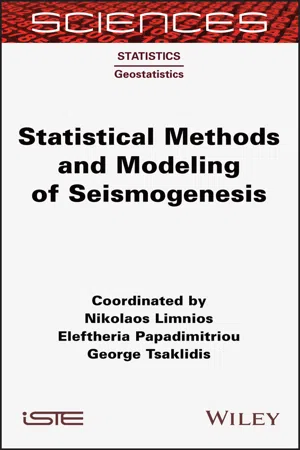
Statistical Methods and Modeling of Seismogenesis
- English
- ePUB (mobile friendly)
- Available on iOS & Android
Statistical Methods and Modeling of Seismogenesis
About This Book
The study of earthquakes is a multidisciplinary field, an amalgam of geodynamics, mathematics, engineering and more. The overriding commonality between them all is the presence of natural randomness.
Stochastic studies (probability, stochastic processes and statistics) can be of different types, for example, the black box approach (one state), the white box approach (multi-state), the simulation of different aspects, and so on. This book has the advantage of bringing together a group of international authors, known for their earthquake-specific approaches, to cover a wide array of these myriad aspects. A variety of topics are presented, including statistical nonparametric and parametric methods, a multi-state system approach, earthquake simulators, post-seismic activity models, time series Markov models with regression, scaling properties and multifractal approaches, selfcorrecting models, the linked stress release model, Markovian arrival models, Poisson-based detection techniques, change point detection techniques on seismicity models, and, finally, semi-Markov models for earthquake forecasting.
Frequently asked questions
Information
1
Kernel Density Estimation in Seismology
1.1. Introduction





Table of contents
- Cover
- Table of Contents
- Title Page
- Copyright
- Preface
- 1 Kernel Density Estimation in Seismology
- 2 Earthquake Simulators Development and Application
- 3 Statistical Laws of Post-seismic Activity
- 4 Explaining Foreshock and the Båth Law Using a Generic Earthquake Clustering Model
- 5 The Genesis of Aftershocks in Spring Slider Models
- 6 Markov Regression Models for Time Series of Earthquake Counts
- 7 Scaling Properties, Multifractality and Range of Correlations in Earthquake Time Series: Are Earthquakes Random?
- 8 Self-correcting Models in Seismology: Possible Coupling Among Seismic Areas
- 9 Markovian Arrival Processes for Earthquake Clustering Analysis
- 10 Change Point Detection Techniques on Seismicity Models
- 11 Semi-Markov Processes for Earthquake Forecast
- List of Authors
- Index
- End User License Agreement